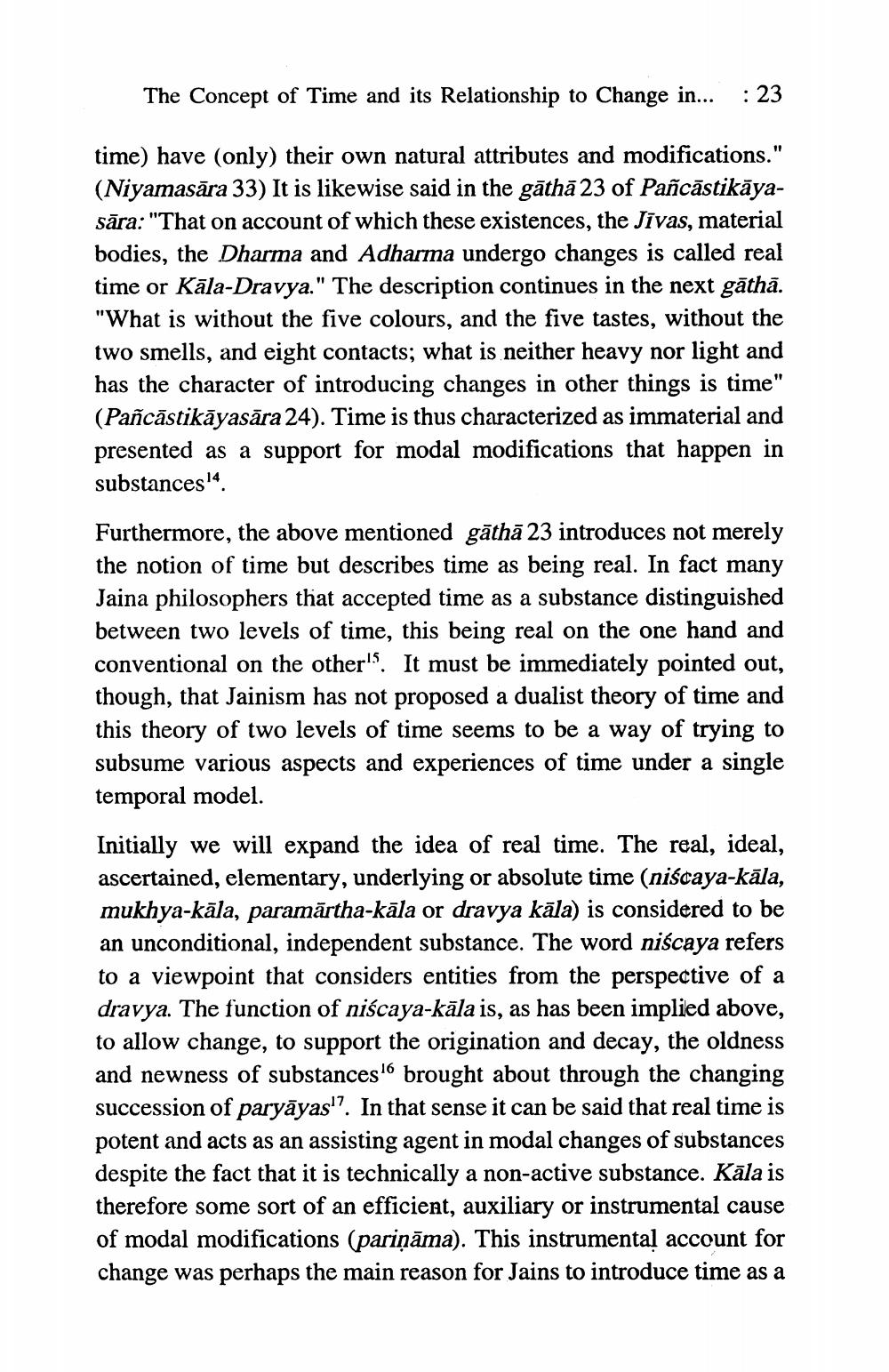________________
The Concept of Time and its Relationship to Change in... : 23
time) have (only) their own natural attributes and modifications." (Niyamasāra 33) It is likewise said in the gāthā 23 of Pañcāstikāyasāra: "That on account of which these existences, the Jivas, material bodies, the Dharma and Adharma undergo changes is called real time or Kāla-Dravya." The description continues in the next gāthā. "What is without the five colours, and the five tastes, without the two smells, and eight contacts; what is neither heavy nor light and has the character of introducing changes in other things is time" (Pañcāstikāyasāra 24). Time is thus characterized as immaterial and presented as a support for modal modifications that happen in substances!
Furthermore, the above mentioned gāthā 23 introduces not merely the notion of time but describes time as being real. In fact many Jaina philosophers that accepted time as a substance distinguished between two levels of time, this being real on the one hand and conventional on the others. It must be immediately pointed out, though, that Jainism has not proposed a dualist theory of time and this theory of two levels of time seems to be a way of trying to subsume various aspects and experiences of time under a single temporal model. Initially we will expand the idea of real time. The real, ideal, ascertained, elementary, underlying or absolute time (niscaya-kāla, mukhya-kāla, paramārtha-kāla or dravya kāla) is considered to be an unconditional, independent substance. The word niscaya refers to a viewpoint that considers entities from the perspective of a dravya. The function of niścaya-kāla is, as has been implied above, to allow change, to support the origination and decay, the oldness and newness of substances brought about through the changing succession of paryāyas'?. In that sense it can be said that real time is potent and acts as an assisting agent in modal changes of substances despite the fact that it is technically a non-active substance. Kāla is therefore some sort of an efficient, auxiliary or instrumental cause of modal modifications (pariņāma). This instrumental account for change was perhaps the main reason for Jains to introduce time as a




